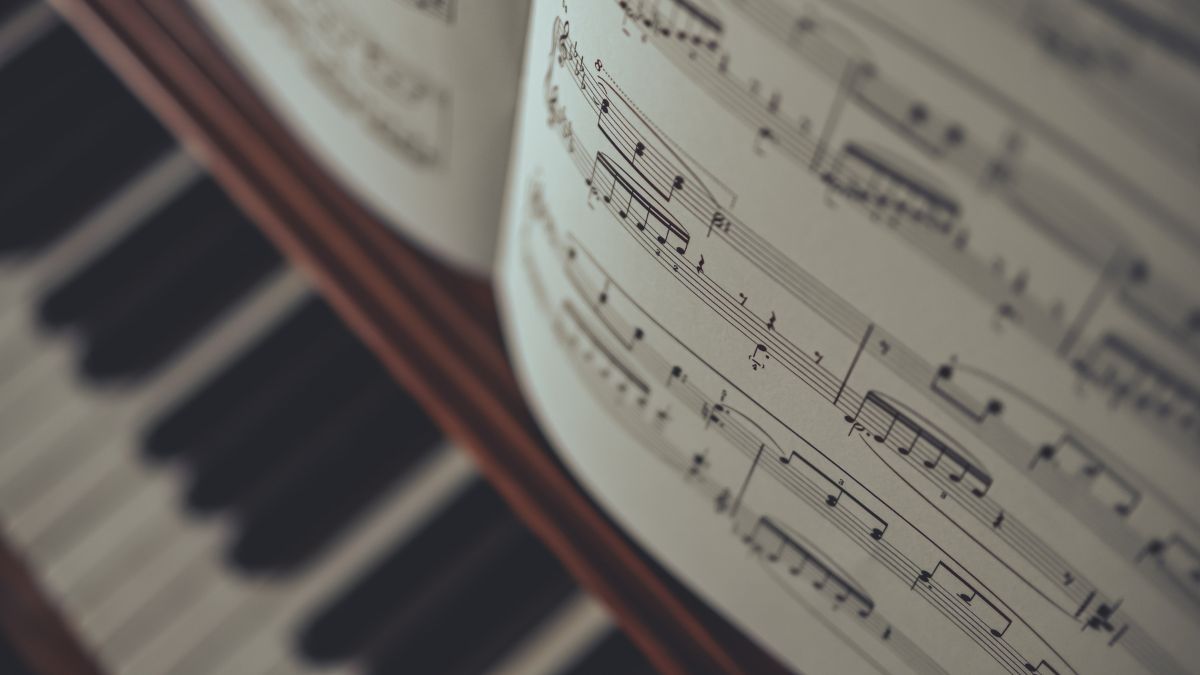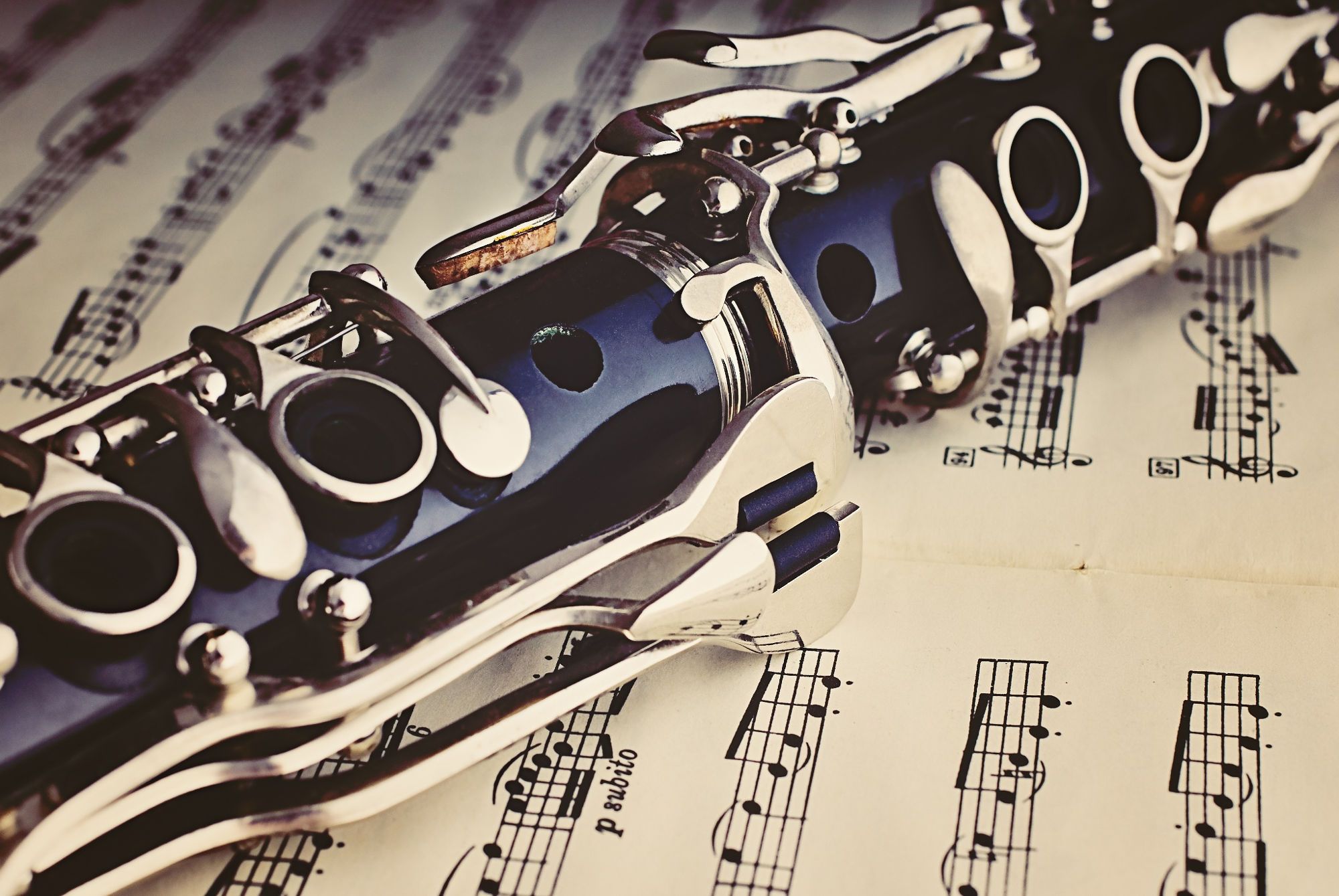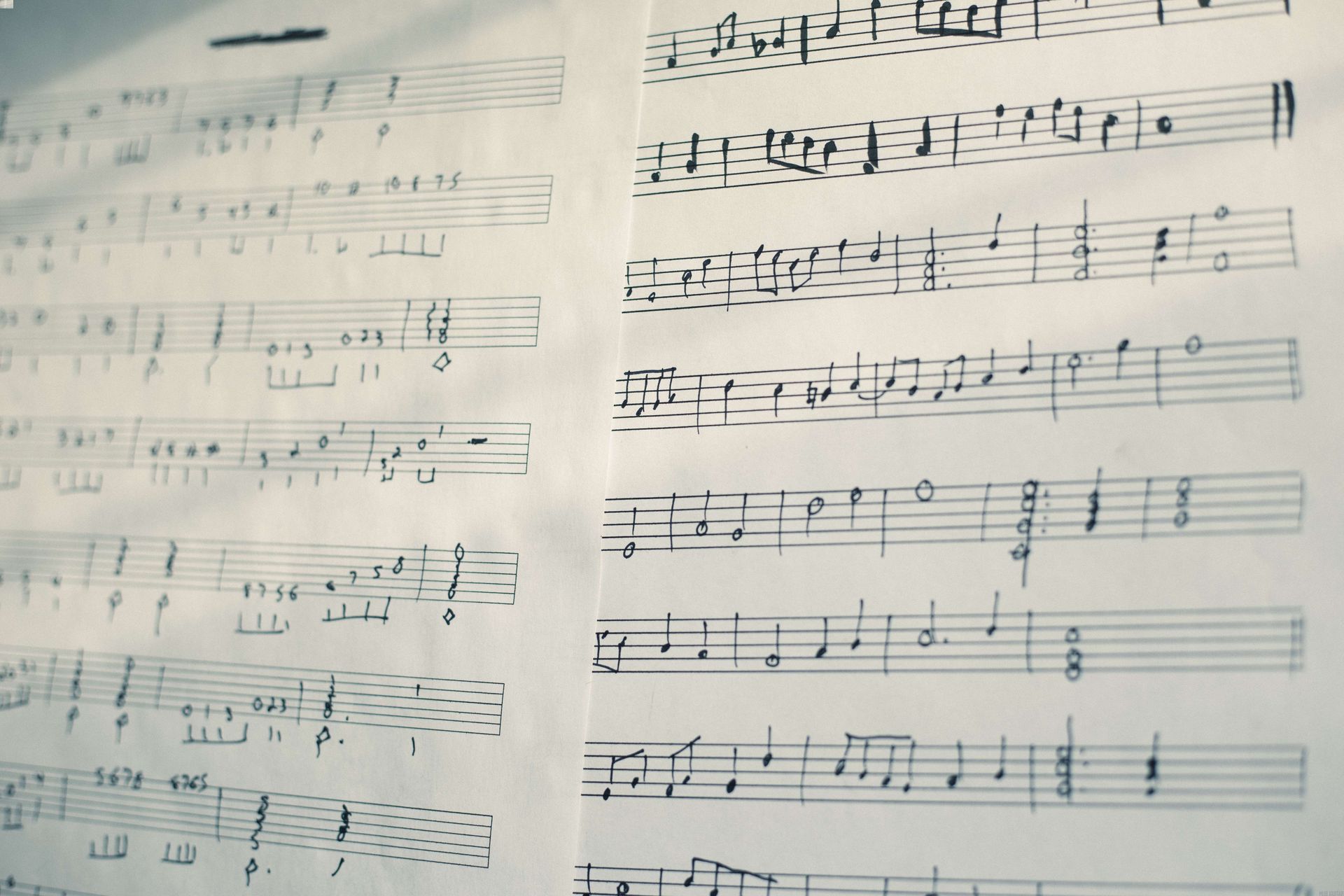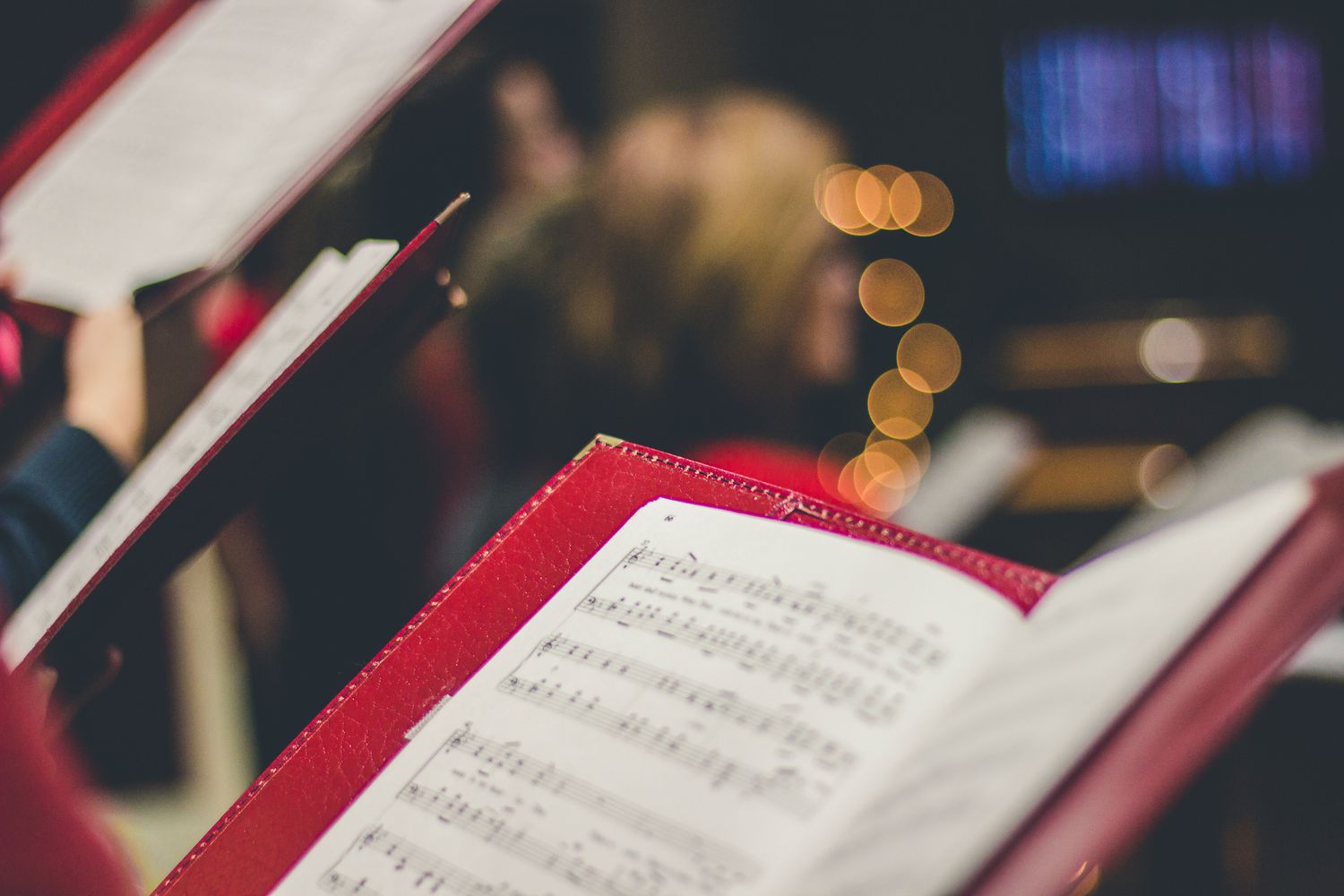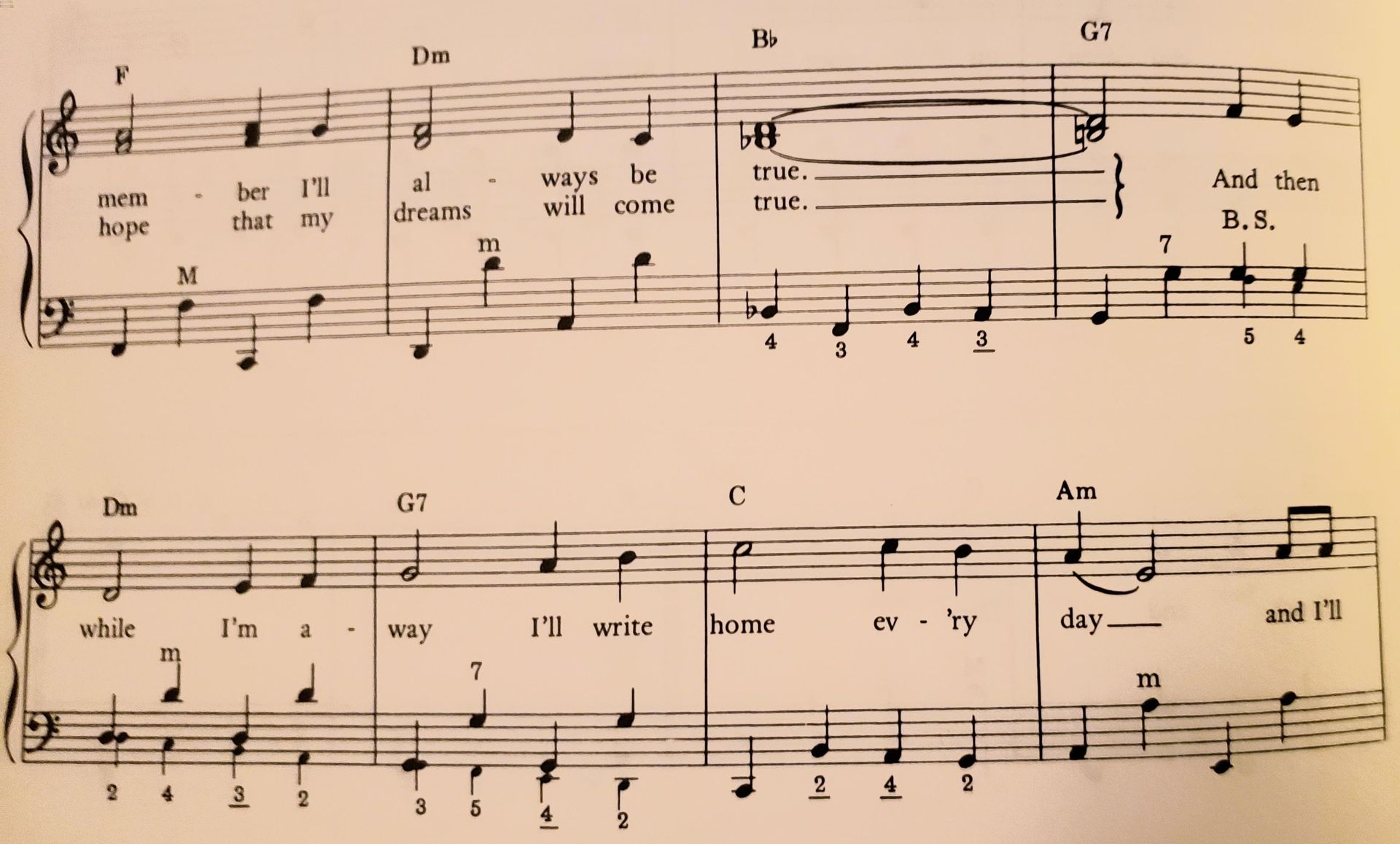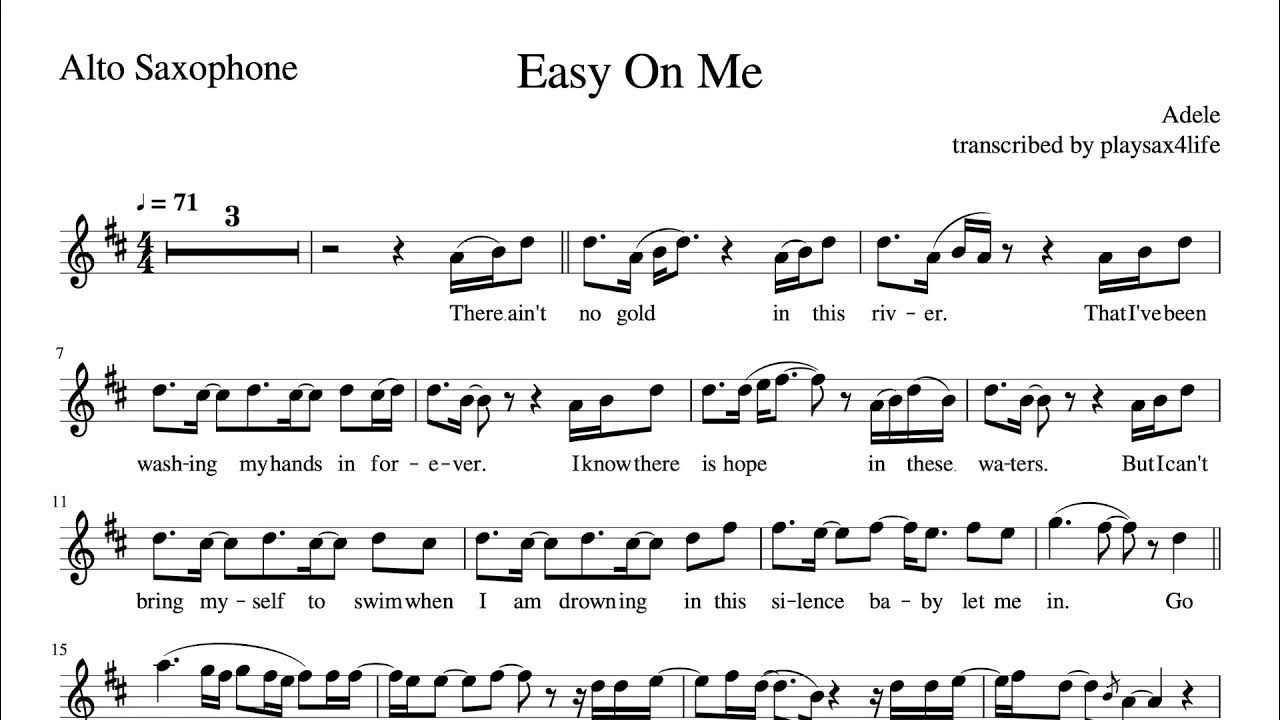Home>Production & Technology>Sheet Music>How To Read Sheet Music Ukulele


Sheet Music
How To Read Sheet Music Ukulele
Modified: January 22, 2024
Learn how to read sheet music for ukulele with our comprehensive guide. Get started today and unlock a whole new level of musical proficiency.
(Many of the links in this article redirect to a specific reviewed product. Your purchase of these products through affiliate links helps to generate commission for AudioLover.com, at no extra cost. Learn more)
Table of Contents
Introduction
Sheet music is a crucial component of learning and playing any musical instrument, including the ukulele. It serves as a roadmap, guiding musicians through the notes, rhythms, and musical symbols necessary to bring a composition to life. Whether you’re a beginner or an experienced player looking to expand your skills, understanding how to read sheet music on the ukulele can open up a world of musical possibilities.
Learning to read sheet music may seem daunting at first, but with practice and a basic understanding of its structure, you can quickly develop the skills to decipher and perform your favorite songs on the ukulele. Not only will this enable you to play a wider range of musical genres, but it will also enhance your overall musicianship and musicality.
In this article, we’ll break down the basics of reading sheet music on the ukulele and provide you with helpful tips and techniques to facilitate your learning journey. Whether you’re starting from scratch or looking to improve your existing skills, the information provided here will serve as a valuable resource to help you become a proficient sheet music reader on the ukulele.
Before we delve into the technical aspects, it’s important to approach the process of learning sheet music with an open mind and a positive attitude. While it may take time and practice to become comfortable with reading sheet music, the rewards and opportunities it can bring to your ukulele playing are well worth the effort.
So, grab your ukulele, a pen, and some sheet music, and let’s dive into the fascinating world of reading sheet music on the ukulele.
The Basics of Sheet Music
Sheet music is a written representation of musical notation, consisting of a series of symbols, notes, and markings that convey the pitch, rhythm, dynamics, and other musical elements of a composition. Understanding the basics of sheet music is fundamental to reading and interpreting musical scores on the ukulele.
The foundation of sheet music lies in the staff, which is a set of horizontal lines and spaces. Each line and space represents a different pitch, allowing musicians to visually identify and reproduce specific notes.
The staff is comprised of five horizontal lines, with each line and space assigned a letter name representing a different pitch. From bottom to top, the lines are E, G, B, D, and F. The spaces are F, A, C, and E. By memorizing this pattern, you can quickly identify the corresponding note on the ukulele as you read sheet music.
In addition to the staff, sheet music may also include other symbols and markings that provide further instructions for playing the ukulele. These may include clefs, key signatures, time signatures, and tempo markings, among others.
The treble clef is commonly used in ukulele sheet music and indicates that the notes on the staff are to be played in a higher pitch range. It is represented by a stylized “G” symbol that curls around the second line of the staff, known as the G-line.
Key signatures indicate the key of the composition and are typically found at the beginning of a piece of sheet music. They consist of sharps or flats placed on specific lines or spaces of the staff, indicating which notes should be played higher or lower in pitch throughout the song.
Time signatures indicate the number of beats in each measure and the type of note that receives one beat. They are written as a fraction at the beginning of a piece of sheet music and help musicians stay in sync and maintain the rhythmic structure of a composition.
Tempo markings indicate the speed at which a piece should be played. They are usually written in Italian and can range from slow (adagio) to fast (presto). Familiarizing yourself with different tempo markings will help you interpret the desired mood and character of a composition.
By familiarizing yourself with the basics of sheet music and understanding the various symbols and markings, you will be well-equipped to start reading and playing sheet music on the ukulele. Practice is key, so don’t be discouraged if it takes time to become comfortable. With perseverance and dedication, you’ll be able to bring beautiful melodies to life on your ukulele.
Understanding the Staff
The staff is the foundation of sheet music, providing a visual representation of notes and pitches. It consists of five horizontal lines and four spaces, with each line and space representing a different pitch on the ukulele. Understanding how the staff works is essential for navigating and reading sheet music effectively.
The lines on the staff are numbered from bottom to top, starting with line one at the bottom. On ukulele sheet music, the lines correspond to the strings of the instrument, with line one representing the top string (A string) and line five representing the bottom string (G string).
The spaces between the lines also have significance and represent different pitches. The bottom space corresponds to the G string, the next space up is for the C string, then the E string, and finally, the top space represents the A string.
When reading sheet music, the notes are placed on the lines or in the spaces to indicate which string and fret should be played on the ukulele. For example, if a note is placed on the second line, it means you should play the note on the C string.
It’s important to note that ukulele sheet music is typically written in the treble clef, which is the most common clef used for ukulele music. The treble clef, also known as the G clef, identifies the note G on the second line of the staff. This means that when you see the treble clef in sheet music, the notes on or around the G line are played on the ukulele.
When it comes to reading sheet music on the ukulele, understanding the staff is crucial. Take some time to familiarize yourself with the five lines and four spaces, and how they correspond to the strings of the ukulele. This knowledge will help you quickly locate notes on the instrument and effectively translate them from the sheet music to your ukulele playing.
As you practice reading sheet music, make sure to pay attention to the placement of the notes on the staff and which string and fret they correspond to on the ukulele. By keeping these fundamental principles in mind, you’ll be well on your way to becoming a confident and proficient reader of ukulele sheet music.
Reading Sheet Music Notes
Reading sheet music notes is key to understanding the melody and rhythm of a piece of music. Each note on the staff represents a specific pitch, and being able to identify and play these notes is essential for translating sheet music onto the ukulele.
The notes on the staff are represented by different symbols called noteheads. The position of the notehead on the staff indicates the pitch of the note, while the type of notehead determines its duration.
There are several different noteheads you’ll encounter when reading sheet music. Here are a few common ones:
- Whole Note: A solid oval-shaped notehead. It represents the longest note duration and is held for the full duration of a measure.
- Half Note: A hollow oval-shaped notehead with a stem. It represents half the duration of a whole note.
- Quarter Note: A solid oval-shaped notehead with a stem. It represents a quarter of the duration of a whole note.
- Eighth Note: A solid oval-shaped notehead with a flag attached to the stem. It represents half the duration of a quarter note.
- Sixteenth Note: A solid oval-shaped notehead with two flags attached to the stem. It represents half the duration of an eighth note.
When reading sheet music, you’ll often see notes connected by curved lines or beams. These are called ties and beams, and their purpose is to indicate that the connected notes should be played as one continuous sound, without interruption.
To determine which string and fret to play on the ukulele, you’ll need to associate the note on the sheet music with the corresponding string and fret. This can be determined by the position of the note on the staff and your knowledge of the ukulele’s tuning.
For instance, if the note is on the bottom line of the staff, it corresponds to the G string played open (no fret). If the note is on the second space from the bottom, it corresponds to the C string played on the third fret.
As you read sheet music notes on the ukulele, it’s important to continually practice and reinforce your knowledge of the note names and their positions on the ukulele strings. With time and experience, you’ll be able to quickly identify and play the correct notes, translating them into beautiful music on your ukulele.
Identifying Note Durations
When reading sheet music, it’s essential to understand the duration of each note. The duration of a note indicates how long it should be played, and it is represented by different types of noteheads and symbols. By mastering note durations, you’ll be able to accurately represent the rhythmic elements of a composition on the ukulele.
Here are some common note durations you’ll encounter when reading sheet music:
- Whole Note: Represented by a solid oval-shaped notehead, the whole note is held for the full duration of a measure. It receives 4 beats in 4/4 time.
- Half Note: Indicated by a hollow oval-shaped notehead with a stem, the half note is held for half the duration of a whole note. In 4/4 time, it receives 2 beats.
- Quarter Note: Represented by a solid oval-shaped notehead with a stem, the quarter note is held for a quarter of the duration of a whole note. In 4/4 time, it receives 1 beat.
- Eighth Note: Signified by a solid oval-shaped notehead with a flag attached to the stem, the eighth note is held for half the duration of a quarter note. In 4/4 time, it receives half a beat.
- Sixteenth Note: Depicted by a solid oval-shaped notehead with two flags attached to the stem, the sixteenth note is held for half the duration of an eighth note. In 4/4 time, it receives a quarter of a beat.
Rests are also crucial to understand when it comes to note durations. Rests indicate moments of silence or pauses in the music. Each type of note duration has a corresponding rest symbol, indicating the duration of the silence to be observed.
By being able to identify the different note durations and rests, you’ll have a solid foundation for accurately playing the rhythm of a piece on the ukulele. Practice reading and counting rhythms, and gradually increase the speed to enhance your rhythmic accuracy and ability to interpret sheet music.
It’s important to note that sheet music may also include dotted notes and tied notes. A dot placed after a note increases its duration by half. For example, a dotted half note would be equivalent to three beats in 4/4 time. Tied notes indicate that two or more notes are played as one continuous sound, without interruption.
As you practice reading sheet music on the ukulele, pay close attention to the duration of the notes and rests. Develop your sense of rhythm, counting, and internalizing these durations. With time and practice, you’ll be able to play the notes accurately and bring your musical interpretation to life.
Recognizing Musical Symbols
Sheet music is filled with various musical symbols that provide important instructions and information for musicians. Understanding and recognizing these symbols is crucial for effectively interpreting and playing sheet music on the ukulele.
Here are some common musical symbols you’ll encounter when reading sheet music:
- Key Signature: The key signature appears at the beginning of a piece of sheet music and indicates the key in which the composition is written. It consists of sharps (#) or flats (b) placed on specific lines or spaces of the staff and affects the pitch of certain notes throughout the piece.
- Time Signature: The time signature appears at the beginning of a piece of sheet music and indicates the number of beats in each measure and the type of note that receives one beat. The top number represents the number of beats in a measure, while the bottom number represents the type of note that receives one beat.
- Treble Clef: The treble clef, also known as the G clef, is commonly used for the ukulele and indicates that the notes on the staff are played in a higher pitch range. It is represented by a stylized “G” symbol that curls around the second line of the staff.
- Flat (♭): A flat symbol lowers the pitch of a note by a half step. When placed before a note on the staff, it indicates that the note should be played one semitone lower.
- Sharp (#): A sharp symbol raises the pitch of a note by a half step. When placed before a note on the staff, it indicates that the note should be played one semitone higher.
- Natural (♮): A natural symbol cancels the effect of a previous sharp or flat and returns the note to its original pitch.
- Fermata: The fermata symbol, represented by a dot within a half circle, indicates that a note or rest should be extended beyond its normal duration. It allows the performer to hold the note or rest longer than indicated.
- Repeat Signs: Repeat signs indicate that a section of music should be repeated. They are typically represented by a double bar with two dots, and performers should go back to a specific point indicated by corresponding repeat markers.
These are just a few examples of the many musical symbols you may encounter when reading sheet music. Take the time to familiarize yourself with these symbols and their meanings by studying sheet music and referring to music theory resources. As you become more comfortable with recognizing and interpreting these symbols, you’ll be able to navigate sheet music with confidence and accuracy.
Remember, consistency in your interpretation of these musical symbols is key. Take note of them as you read sheet music, and make sure to apply the correct techniques and instructions on the ukulele. With practice and a keen eye for detail, you’ll become adept at recognizing and understanding the various musical symbols present in sheet music.
Decoding Chords and Tabs
In addition to reading traditional sheet music notation, ukulele players often rely on chord symbols and tablature (tabs) to learn and play songs. Understanding how to decode chords and tabs is essential for expanding your repertoire and playing a wide variety of music on the ukulele.
Chord symbols are abbreviated notations that indicate which chords to play in a given song. They are typically displayed above the lyrics or sheet music and consist of letters and symbols. For example, a common ukulele chord symbol is “C,” which represents the C major chord. Other symbols, such as “G,” “F,” and “Am,” represent various chords that can be played on the ukulele.
To play a chord indicated by a symbol, you’ll need to know the finger placement on the ukulele fretboard. Chord charts are valuable resources that provide diagrams showing the finger positions for different chords. By referencing these charts and practicing the finger placements, you’ll be able to quickly decode chord symbols and play the corresponding chords on the ukulele.
Tabs provide a more visual representation of how to play songs on the ukulele. Instead of using traditional notation, tabs use a diagram of the ukulele fretboard, with numbers indicating which frets and strings to press down. The top line of the tab represents the bottom (G) string, while the bottom line represents the top (A) string.
Here’s an example of how tabs are represented for a simple ukulele song:
A|---0---2---3---2---
E|---3---3---1---0---
C|---2---2---2---2---
G|---0---0---0---0---
Each number in the tab corresponds to a specific fret to be pressed down on the respective string. By following the numbers, you’ll be able to play the melody or chords indicated in the tab for a song.
Decoding chords and tabs may require some practice, especially if you’re new to reading them. Start with simple chord progressions and familiar melodies to build your understanding. As you progress, you can challenge yourself with more complex chords and intricate tablature.
Keep in mind that chords and tabs are valuable tools for learning songs on the ukulele, but they don’t provide the full musical context. It’s important to combine them with sheet music notation to capture all the nuances and details of a composition.
By becoming proficient in decoding chords and tabs, you’ll unlock a vast library of songs to play on the ukulele. Embrace the process of learning and experimenting with different chords, tabs, and styles, and before you know it, you’ll be entertaining yourself and others with beautiful music on the ukulele.
Techniques for Reading Sheet Music on Ukulele
Reading sheet music on the ukulele may require some initial effort, but with the right techniques and practice, it can become second nature. Here are some effective techniques to help you improve your ability to read sheet music on the ukulele:
- Master the Basics: Start by familiarizing yourself with the staff, note names, and positions on the ukulele. Practice identifying notes on the staff and playing them on the corresponding string and fret.
- Take It Slow: Start with simple songs and exercises to gradually build your reading skills. Focus on playing accurately rather than playing quickly. As you gain confidence and proficiency, you can gradually increase the tempo.
- Break It Down: If a piece seems overwhelming, break it down into smaller sections or phrases. Master each section before moving on to the next. This approach will help you tackle challenging pieces more effectively.
- Use Visualizations: Visualize the notes and their positions on the ukulele as you read sheet music. Imagine yourself playing the notes on the correct strings and frets, allowing your mind and fingers to connect more easily.
- Sing and Play: Singing the melodic line while playing the corresponding notes on the ukulele can strengthen your understanding and internalization of the sheet music. This technique can also improve your sense of pitch and rhythm.
- Mark Your Music: Use a pencil to mark any challenging sections, note fingerings, or reminders directly on the sheet music. These annotations can serve as helpful cues as you practice and perform the music.
- Practice Sight Reading: Regularly practice sight reading exercises to improve your ability to read sheet music on the spot. Set aside dedicated practice sessions where you focus solely on reading and playing new pieces of music without prior preparation.
- Play with Others: Engage in jam sessions or join a ukulele group to play in collaboration with other musicians. This will expose you to different styles of music and help you develop the ability to read and perform sheet music in real-time.
- Utilize Technology: Take advantage of technology by using digital sheet music apps or online resources that provide interactive sheet music with playback options. These tools can assist in visualizing the music and hearing it as you read along.
Remember, reading sheet music is a skill that takes time and practice to develop. Be patient with yourself and celebrate your progress along the way. By consistently incorporating these techniques into your practice routine, you’ll enhance your ability to read sheet music on the ukulele and open up a world of musical possibilities.
Tips for Practicing Sheet Music on Ukulele
Practicing sheet music on the ukulele is essential for improving your reading skills and becoming a more proficient musician. Here are some tips to help you make the most of your practice sessions:
- Establish a Practice Routine: Set aside dedicated practice time each day to work on your sheet music reading skills. Consistency is key to making progress, so make practicing a regular part of your musical routine.
- Start with Easy Pieces: Begin by practicing simpler sheet music pieces that match your skill level. This will build a solid foundation and boost your confidence as you progress to more challenging repertoire.
- Break It Down: Divide the sheet music into small sections and practice them individually before putting them together. This approach helps you focus on specific challenging passages and ensures a thorough understanding of the music.
- Use a Metronome: Incorporate a metronome into your practice to develop a strong sense of timing and rhythm. Start at a comfortable tempo and gradually increase the speed as you gain proficiency.
- Practice Hands Separate: If a piece requires complex fingerings or coordination, practice each hand separately before attempting to play with both hands. This allows you to focus on mastering the individual parts before combining them.
- Slow it Down: When encountering difficult passages, slow down the tempo to a speed where you can play accurately and expressively. Gradually increase the tempo as you become more comfortable with the passage.
- Record and Analyze: Record yourself playing the sheet music and listen back to identify areas for improvement. Analyze your performance, taking note of any technical issues or musical expression that can be enhanced.
- Practice Sight Reading: Set aside time specifically for sight reading practice. Choose new sheet music that you haven’t seen before and challenge yourself to read and play through it without prior preparation.
- Seek Feedback: Share your progress with a teacher or experienced musician who can provide constructive feedback and guidance. This outside perspective can help you identify areas for improvement that you may not have noticed on your own.
- Stay Patient and Positive: Learning to read sheet music on the ukulele takes time and persistence. Be patient with yourself and celebrate even the smallest achievements along the way. Maintain a positive mindset and view challenges as opportunities for growth.
Remember, effective practice is about quality over quantity. Take the time to focus on the specific areas that require attention and be present in your practice sessions. By implementing these tips and dedicating yourself to regular practice, you will continually improve your sheet music reading skills on the ukulele and enjoy the rewards of your hard work.
Conclusion
Learning to read sheet music on the ukulele opens a world of possibilities for your musical journey. With the ability to decipher musical notation, you can explore a vast array of songs, genres, and styles on your ukulele. While it may require time, practice, and dedication, the rewards are well worth the effort.
In this article, we discussed the basics of sheet music, including understanding the staff, reading sheet music notes, identifying note durations, and recognizing musical symbols. We also explored techniques for reading sheet music on the ukulele, such as mastering the basics, taking it slow, and visualizing the notes. Additionally, we provided tips for practicing sheet music effectively, emphasizing the importance of establishing a practice routine, starting with easy pieces, and seeking feedback.
Remember, learning to read sheet music is a skill that grows with time and practice. Don’t be discouraged by initial challenges or setbacks. Stay patient, stay motivated, and enjoy the process of learning and mastering new pieces of music. As you develop your sheet music reading skills on the ukulele, you’ll find yourself unlocking the ability to play a wide variety of songs and express your musical creativity.
So, grab your ukulele, open up a sheet music book or download your favorite tunes, and dive into the world of reading sheet music. Immerse yourself in the rich melodies and harmonies as you bring beautiful music to life on your ukulele. With passion, persistence, and a solid foundation in sheet music reading, the possibilities for your ukulele playing are endless.

